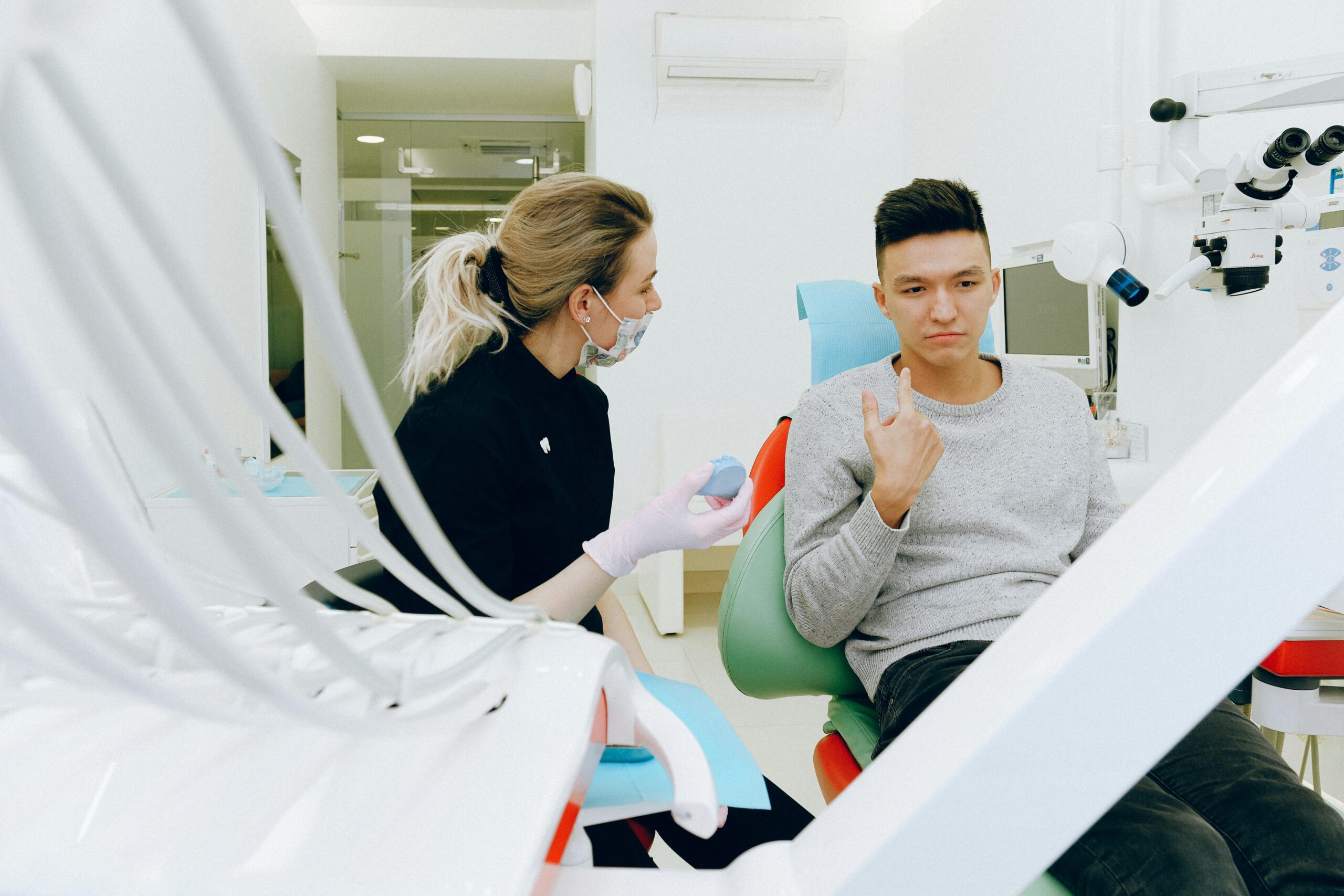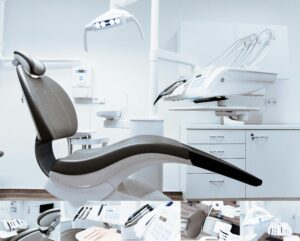A dead tooth can be a source of discomfort and worry. It’s a dental issue that’s more common than you might think.
Understanding what a dead tooth is, its symptoms, and causes is crucial. This knowledge can help you seek timely treatment and prevent further complications.
This article aims to provide comprehensive information about dead tooth symptoms, causes, and treatments. It’s designed to help you identify a dead tooth and understand the available treatment options.
We’ll delve into the role of tooth decay in causing a dead tooth and the importance of tooth pain relief. We’ll also explore various treatment options, from root canal therapy to tooth extraction.
By the end of this article, you’ll have a better understanding of how to manage and prevent this dental issue.
So, let’s dive in and explore the world of dead tooth treatment.
Understanding a Dead Tooth
A dead tooth, also known as a “non-vital tooth,” is one that has lost its blood supply. This condition can lead to various dental health problems if not addressed promptly. Understanding what it means when a tooth is dead can help you make informed decisions about your dental care.
When a tooth dies, the nerve inside it is no longer living, which can cause discoloration. A dead tooth might also lead to bacterial infection if untreated. This can result in further dental complications.
A number of symptoms can signal a dead tooth. Recognising these early is key to finding tooth pain relief and avoiding further damage. Treatment options vary and may include root canals or tooth extraction. It’s essential to address the issue promptly to prevent complications.
- Discolouration
- Pain or discomfort
- Swelling or a bad taste in your mouth
Knowing what causes a tooth to die can aid in prevention. Common causes include physical trauma or untreated decay. Both can disrupt the blood supply to the tooth. Regular dental visits are crucial to detecting these issues early and exploring tooth decay treatment.
What is a Dead Tooth?
A dead tooth is a tooth that has lost its blood supply. The medical term for this condition is “non-vital tooth.” Unlike healthy teeth, a dead tooth can become discoloured or darken over time.
This loss of vitality often leads to the tooth becoming brittle or fragile. A dead tooth might not always hurt, but it can cause noticeable changes in appearance. Discolouration is one of the most common signs that a tooth might be dead or dying.
How Does a Tooth Die?
A tooth dies when its blood supply is cut off. This can occur due to untreated decay, where bacteria enter the tooth’s pulp. Bacteria break down the pulp, leading to infection and potentially killing the tooth.
Physical trauma, like an injury, can also cut off blood flow to the tooth. This type of damage may not be visible immediately but can take time to manifest. Both decay and trauma impact the tooth’s pulp, leading to loss of vitality.
Recognising the Symptoms of a Dead Tooth
Identifying a dead tooth early can prevent further complications. Discolouration is often the first visible sign. A tooth losing its vitality may appear yellow, grey, or black. These changes happen because the internal tissue breaks down.
Pain is another symptom linked with dead teeth. However, it varies from mild to severe. Some may experience sharp, throbbing pain. Others might feel a dull ache.
Swelling and bad taste in the mouth are also associated with a dead tooth. They indicate potential infection. Ignoring these signs can lead to further dental issues.
Bacterial infections from a dead tooth can cause an abscess. This may lead to swelling around the gums. In some cases, pus may form, leading to discomfort and bad breath.
Common symptoms of a dead tooth include:
- Discolouration
- Pain or mild discomfort
- Swelling or bad taste
- Halitosis due to infection
- Sensitivity to temperatures
Being attentive to these symptoms encourages timely dental visits. Quick intervention can ensure effective tooth pain relief. Dentists can accurately diagnose the problem using professional tools and recommend the appropriate tooth decay treatment.
Why Some Dead Teeth are Painless
Not all dead teeth cause pain. This puzzling aspect is due to the tooth’s nerve being non-functional. The absence of a living nerve means there’s no pain signal.
A tooth can die slowly over time, making it less noticeable. Pain typically surfaces only if an infection occurs. Hence, a tooth can be dead and yet painless.
A dead tooth without pain still poses risks. It can lead to infection or affect surrounding teeth. Regular dental check-ups are vital to identify such silent issues. Early detection avoids complications and ensures proper treatment.
Causes of a Dead Tooth
Understanding the causes of a dead tooth can help in taking preventive measures. The primary culprits include tooth decay and physical trauma. Both factors are prevalent yet often overlooked until damage occurs.
Tooth decay slowly erodes the tooth’s structure. It allows bacteria to reach the tooth’s pulp, causing infection. If left untreated, the decay can kill the tooth.
Physical trauma, whether from an accident or sports injury, can also damage a tooth. Sometimes, trauma results in immediate damage. Other times, the effects are delayed but detrimental.
Other factors can increase the risk of a dead tooth. Poor oral hygiene and high sugar consumption are significant contributors. They facilitate decay and weaken teeth over time.
The following list outlines key causes:
- Untreated tooth decay
- Physical trauma or injury
- Poor oral hygiene
- High sugar diets
- Lack of regular dental care
Frequent dental check-ups are crucial. They help in identifying decay or damage early on. Timely action can prevent a tooth from dying and maintain oral health.
Tooth Decay and Its Role
Tooth decay is a critical factor leading to a dead tooth. It begins as a minor issue that gradually worsens. Bacteria attack the enamel first and then progress inward.
The decay’s journey reaches the pulp eventually. This pulp contains nerves and blood vessels vital to tooth vitality. Infection within the pulp disrupts its function, leading to death.
Ignoring early signs like sensitivity can be costly. Prompt responses to decay prevent such dire outcomes. Regular visits to the dentist help catch decay before it escalates.
The Impact of Physical Trauma
Physical trauma can abruptly end a tooth’s life. An accidental hit during sports or a fall may cause invisible damage. This damage can lead to pulp necrosis over time.
Even minor dental accidents should prompt concern. They might seem benign but gradually affect the tooth’s health. Root fractures or cracks may develop unnoticed.
Professional evaluations after trauma can reveal hidden issues. X-rays or sensitivity tests detect internal damage early. Immediate attention helps prevent long-term consequences, preserving the tooth’s health.
Dead Tooth Treatment Options
Treating a dead tooth requires professional intervention. Ignoring the condition may result in serious oral health issues. Thankfully, several treatment options are available to address this problem.
One of the most common treatments for a dead tooth is root canal therapy. This procedure aims to save the tooth while eliminating infection. It involves removing the infected pulp and sealing the tooth.
In some cases, extraction becomes necessary. This approach is considered when a tooth cannot be saved through other methods. After extraction, replacing the tooth is crucial to maintain dental function.
Dental professionals may suggest different types of replacements. Options such as implants, bridges, or dentures are available. Choosing the right one depends on individual needs and budget.
Before deciding on a treatment plan, consider the following factors:
- The tooth’s condition and location
- The patient’s overall dental health
- Costs and insurance coverage
- Pain management and recovery time
- Long-term oral health goals
Discuss these aspects thoroughly with your dentist. This ensures an informed decision about the best treatment path. Tailoring the approach to individual circumstances is vital for successful outcomes.
Modern dental technology has enhanced these treatment options significantly. Procedures are now more comfortable and efficient than ever before. Patients can expect less discomfort and quicker recovery times.
Timely treatment is critical to prevent complications. Delays might lead to more extensive infections and even affect other teeth. Always prioritise professional advice to safeguard oral health.
Root Canal Therapy
Root canal therapy is often the go-to solution for a dead tooth. This treatment focuses on saving your natural tooth. It eliminates the source of infection within the tooth.
The procedure begins with a thorough cleaning of the infected pulp chamber. A dentist removes the infected tissue to prevent further decay. This step alleviates pain and addresses the core issue.
Once the area is clean, the dentist seals the chamber. This protects the tooth against future infections. A crown may be placed on top to restore strength and functionality.
Root canal therapy boasts high success rates. It allows you to preserve your natural smile while resolving discomfort. For many patients, this option is the most desirable outcome.
Tooth Extraction and Replacement
Sometimes, a tooth is beyond repair, requiring extraction. While not the first choice, extraction prevents the spread of infection. It also alleviates persistent pain caused by the dead tooth.
After extraction, replacing the tooth is crucial. This prevents surrounding teeth from shifting into the gap. Shifts can lead to misalignment and further oral health issues.
Implants and bridges offer reliable solutions. Implants mimic natural teeth, providing a robust and long-term option. Bridges fill gaps effectively, using adjacent teeth for support.
In some cases, dentures may be suitable. They are a cost-effective solution, especially for multiple missing teeth. Discuss options with your dentist to find the best fit for your lifestyle.
Choosing a replacement option involves several considerations. A dentist can guide you based on your oral structure and preference. Timely replacement ensures overall oral health and function remain intact.
Managing Tooth Pain Relief
Experiencing pain from a dead tooth can be distressing. Fortunately, there are effective ways to manage pain before and after treatment. Prioritising pain relief can improve your comfort and overall well-being.
Before visiting your dentist, several options can help alleviate tooth pain. Temporary measures can make a significant difference. These methods provide some relief as you await professional dental care.
Before Treatment
When facing tooth pain, try over-the-counter pain relievers. Ibuprofen or paracetamol can help decrease discomfort. Always follow the dosage guidelines to ensure safety.
Applying a cold compress to the affected area may reduce swelling and numb pain. This method is simple and easily done at home. However, if pain persists, consult your dentist quickly.
After Treatment
Post-treatment pain management is also crucial. Your dentist might prescribe medications to help control residual discomfort. Follow the prescribed regimen for optimal recovery.
Avoid hard foods immediately after treatment to prevent strain on the healing area. Soft foods and a gentle approach to eating can aid recovery. Communicate any ongoing pain with your dentist for further guidance.
Incorporating proper pain management strategies can enhance the treatment experience. Relief measures allow you to concentrate on healing and returning to normal activities swiftly.
Preventing Tooth Decay and Dead Teeth
Preventing tooth decay and dead teeth hinges on proper oral care. Simple changes can make a significant difference in dental health. Avoiding complications starts with everyday habits.
A robust oral hygiene routine is fundamental. This routine acts as the first line of defence against decay. It keeps your teeth in top condition and wards off potential problems.
In addition to daily care, regular dental visits play a crucial role. Professional cleanings and examinations catch issues before they escalate. These appointments are essential for maintaining healthy teeth.
Integrating the following practices can protect your dental health:
- Brush twice daily using fluoride toothpaste.
- Floss daily to remove debris from between teeth.
- Limit sugary snacks and beverages.
- Use mouthwash to reduce bacteria.
- Stay hydrated to promote saliva production.
Oral Hygiene Practices
Effective brushing is essential for oral health. Use fluoride toothpaste and a soft-bristle brush twice a day. Follow a thorough technique to ensure all surfaces are clean.
Flossing daily reaches areas a brush can’t. This practice removes particles and prevents decay. It’s an indispensable part of any dental care routine.
Additionally, consider using mouthwash to reduce oral bacteria. It can freshen breath and add another layer of protection. Simple adjustments to daily routines can significantly impact overall tooth health.
Regular Dental Check-Ups
Scheduling regular dental check-ups is vital for decay prevention. Dentists can identify issues early, reducing the risk of dead teeth. These visits include cleanings that remove plaque build-up.
Discuss your dental history and concerns during appointments. Open dialogue ensures personalised care and effective prevention strategies. Your dentist will advise on maintaining excellent oral health.
Moreover, dental check-ups offer a chance for professional advice. Dentists provide guidance tailored to your specific needs. Proactive care can help maintain your natural teeth and a healthy smile for years.
The Importance of Timely Treatment
Timely treatment is crucial in dealing with a dead tooth. Ignoring the problem can lead to more severe dental issues. Acting promptly preserves oral health and prevents pain.
Early diagnosis increases the success of treatments like root canals. It also reduces the likelihood of infections and abscesses. Regular dental visits can ensure that a dead tooth is addressed swiftly.
Taking prompt action not only alleviates discomfort but also maintains your smile’s aesthetic appeal. It prevents further complications, safeguarding both dental function and overall health. Prioritising dental care today can prevent problems tomorrow.








